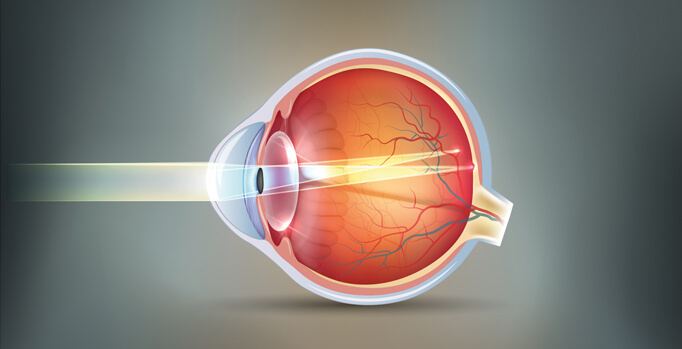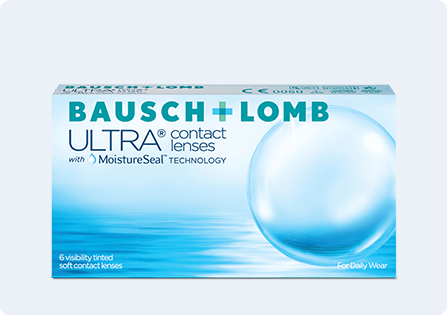Vision Correction
Astigmatism
Astigmatism is a common condition which relates to the shape of the eye and will generally result in vision being blurry or distorted.

What is Astigmatism?
Astigmatism is a very common condition or refractive error which relates to the shape of the eye. There are different types of astigmatism; corneal astigmatism is where the front surface of the eye has irregular curvature. In some astigmatic eyes, the cornea can be even in shape. This would be known as lenticular astigmatism. Corneal astigmatism is more common and is often described as a rugby ball shaped eye. Depending on the strength of astigmatism, it will generally result in vision being blurry or distorted.
Causes
The most common type of astigmatism is termed as regular astigmatism. This is when light will cause the curves of the cornea to produce two different points of focus that if uncorrected, will not form a sharp image onto the retina. It is not unusual for people with myopia (short-sightedness) or hyperopia (long-sightedness) to have astigmatism as well. With regular astigmatism, these curves lay 90º apart or put another way, are perpendicular to each other.
A more unusual type of astigmatism is termed as irregular, where the curves are not perpendicular to each other. This can be caused by injury to the cornea, scarring, surgery or by conditions such as keratoconus.
Astigmatism is a common refractive error of the eye. In a study of over 11,000 spectacle wearers in the UK (both children and adults), 47.4% had astigmatism of 0.75 dioptres or greater in at least one eye, and 24.1% had this amount of astigmatism in both eyes.


Symptoms of Astigmatism
Common symptoms of astigmatism include:
- Blurry vision at all distances
- Distorted vision
- Squinting
- Eye strain
- Headaches
During a sight test, the optometrist will place a series of lenses in front of the eye until a clear focus is obtained. There are other tests involved with astigmatic correction, as the optometrist will need to measure the amount of astigmatism as well as the direction it lies in. These tests are in conjunction with tests for myopia and hyperopia. Treatment options then can be:
- Spectacles – The most common treatment for astigmatic eyes. Due to the irregular shape of the eye, spectacle lenses will have a different shape. A spherical shaped lens is combined with a cylindrical shaped lens and will need to be positioned in a specific direction in front of the eye to produce a sharp focus. The smallest amounts of astigmatism can be corrected by spectacle lenses.
- Refractive Surgery – Changes the shape of a small section of the front surface of the cornea in order to correct astigmatism, although there may be limitations to the amount that can be corrected. These procedures use laser technology and there are different methods available that will suit different prescriptions.
- Contact Lenses – These lenses are known as ‘toric’ lenses and come in a variety of materials and designs to almost suit every shape of eye. In general, the eye would need to have a reasonable amount of astigmatism in order for contact lenses to be required.
- Rigid gas permeable lenses can correct higher amounts of regular astigmatism and are often used for complex sight prescriptions.
Irregular astigmatism can be corrected by larger rigid lenses called semi-sclerals or corneal vault lenses.
These symptoms can also be a sign of other eye conditions. If you have any of the symptoms, please check with your eye care practitioner.




